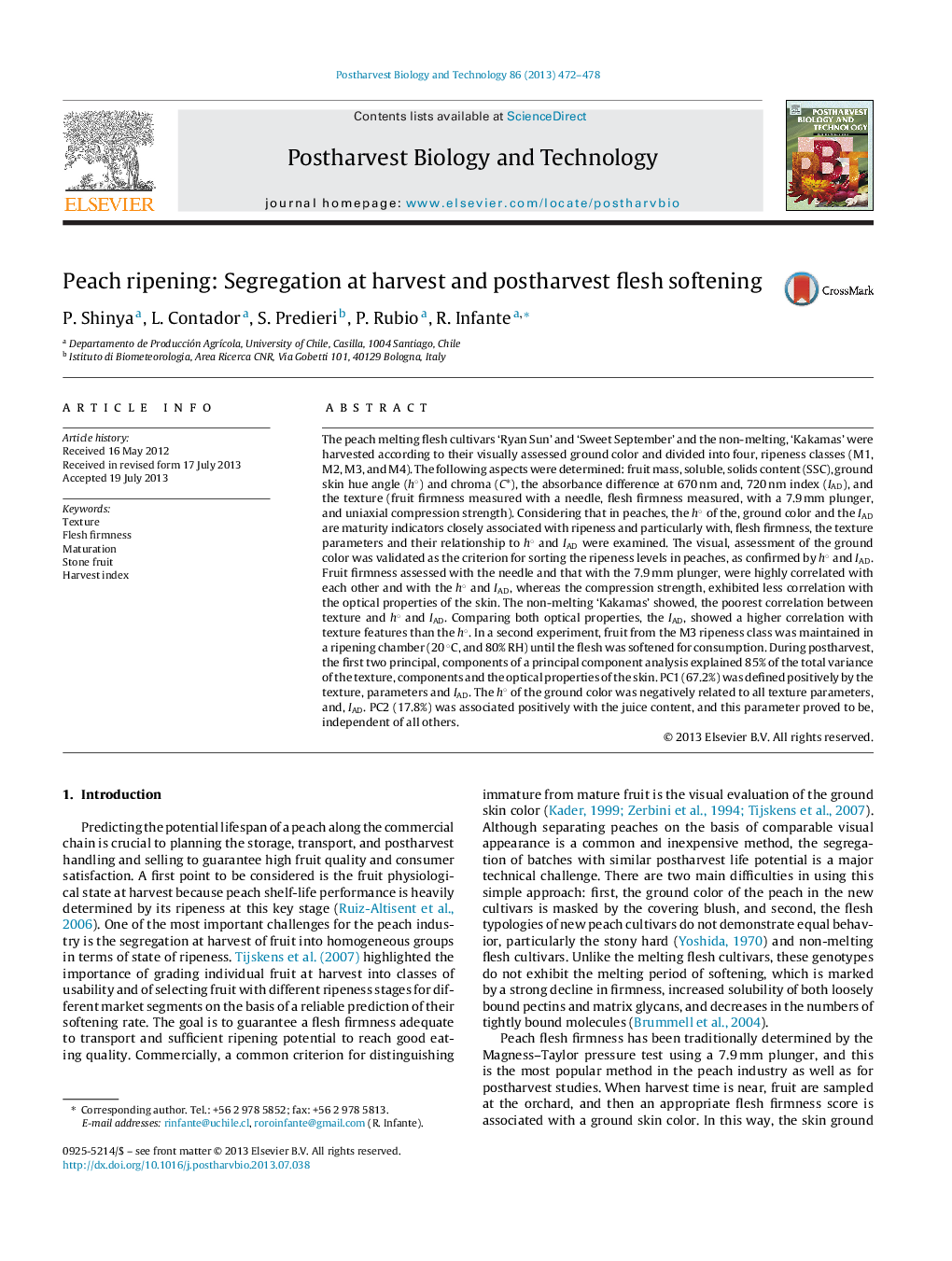| Article ID | Journal | Published Year | Pages | File Type |
|---|---|---|---|---|
| 6378821 | Postharvest Biology and Technology | 2013 | 7 Pages |
Abstract
The peach melting flesh cultivars 'Ryan Sun' and 'Sweet September' and the non-melting, 'Kakamas' were harvested according to their visually assessed ground color and divided into four, ripeness classes (M1, M2, M3, and M4). The following aspects were determined: fruit mass, soluble, solids content (SSC), ground skin hue angle (h°) and chroma (C*), the absorbance difference at 670 nm and, 720 nm index (IAD), and the texture (fruit firmness measured with a needle, flesh firmness measured, with a 7.9 mm plunger, and uniaxial compression strength). Considering that in peaches, the h° of the, ground color and the IAD are maturity indicators closely associated with ripeness and particularly with, flesh firmness, the texture parameters and their relationship to h° and IAD were examined. The visual, assessment of the ground color was validated as the criterion for sorting the ripeness levels in peaches, as confirmed by h° and IAD. Fruit firmness assessed with the needle and that with the 7.9 mm plunger, were highly correlated with each other and with the h° and IAD, whereas the compression strength, exhibited less correlation with the optical properties of the skin. The non-melting 'Kakamas' showed, the poorest correlation between texture and h° and IAD. Comparing both optical properties, the IAD, showed a higher correlation with texture features than the h°. In a second experiment, fruit from the M3 ripeness class was maintained in a ripening chamber (20 °C, and 80% RH) until the flesh was softened for consumption. During postharvest, the first two principal, components of a principal component analysis explained 85% of the total variance of the texture, components and the optical properties of the skin. PC1 (67.2%) was defined positively by the texture, parameters and IAD. The h° of the ground color was negatively related to all texture parameters, and, IAD. PC2 (17.8%) was associated positively with the juice content, and this parameter proved to be, independent of all others.
Related Topics
Life Sciences
Agricultural and Biological Sciences
Agronomy and Crop Science
Authors
P. Shinya, L. Contador, S. Predieri, P. Rubio, R. Infante,
